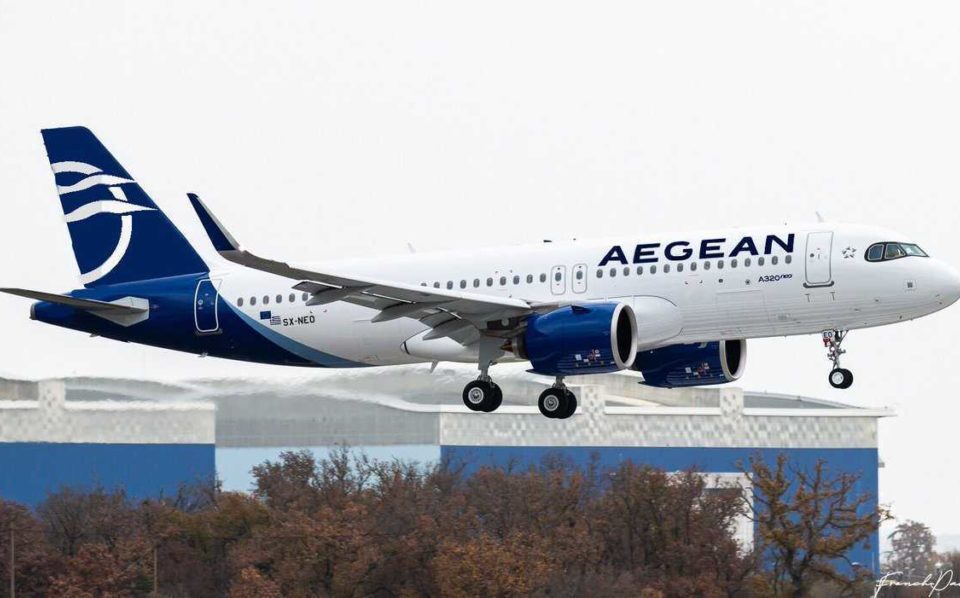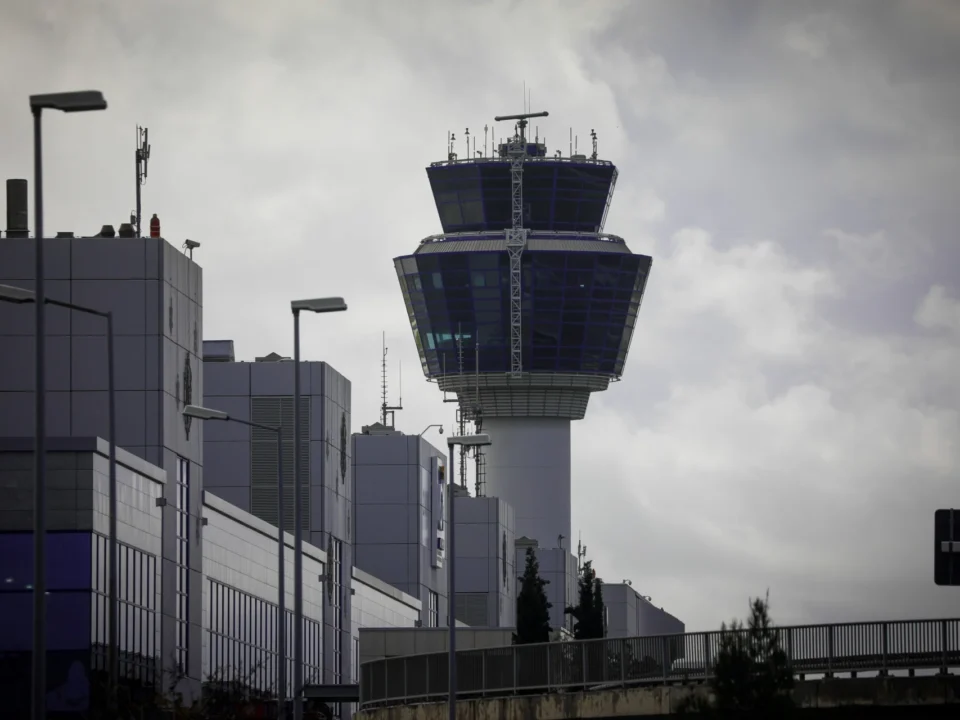In the shadow of the deadly train accident in Tempe, the Association of Electronic Air Traffic Safety Engineers of the Civil Aviation Authority (ENIMAEK/YPA) is unleashing a barrage of accusations about flight safety.
In a statement, the electronic/engineers of the CAA, denounce serious deficiencies and malfunctions in key issues concerning air navigation systems, while calling on the management of the CAA and the leadership of the Ministry of Infrastructure and Transport to take a stand by giving specific answers on how and when these will be addressed.
According to the statement issued by the Association of Electronic Air Traffic Safety Engineers of the Civil Aviation Authority (ENIMAEK/YPA), “as a sign of respect to the victims of the fatal train accident and their families, no statement has been made to date on the pathologies in the field of air navigation.
The debate on the problems that the air navigation industry has been facing over the years must be conducted in a calm and sober manner and not under a state of panic. This is how we as Electronic Air Traffic Safety Engineers (EASE) have managed to maintain high levels of safety over the years. We are the only ones who can guarantee the proper functioning of the air navigation systems, so that aircraft can fly safely over the Greek Airspace (FIR).
Alas, as trade unionists we are constantly expressing our opinion on air navigation systems. We are in favour of the notion that the official service positions should be listened to and the scientific proposals of the specialised HMAECs should be made public.
However, when the need arises for trade unionists to ask for clarification and to publicly communicate our concerns in relation to air navigation systems, it implies that the voice of the specialised EMSAs, their scientific position, the reports they have addressed to the services on shortcomings and omissions have not been heard and the questions we have put to the CAA management as responsible employees have not been answered.
In continuation of what we have occasionally pointed out as EMAEK, we ask for immediate solutions to the following key issues:
It has been 2 years since the arson and total destruction of the Radar route (en route) in Attavryros, Rhodes. Why has the CAA management, from the day after the sabotage, not taken urgent action to procure a new Radar? The fact that this radar has been included in a wider process of procurement of modernisation systems for the CAA does not negate the fact that the need to deal with this highly exceptional situation has been present for two years.
Will we enter the summer season of 2023, which starts in a few days, with coverage of the south-eastern sector of the FIR only by the Karpathos Radar which, due to its age, is frequently malfunctioning? We are now rushing to integrate the Cyprus Radar into the system. If the Karpathos radar fails in the summer, will we be left with single coverage from a radar belonging to a third country?
It is now 2 years since the acceptance committee of the new VCRS centralised air navigation communications system in the Hellenikon building (contract 3/2019) found that there are problems in the acceptance of this system. At the moment the HMAEC are keeping the main and backup communications system upright which are 30 years old, already quite old.
As of 14.2.2023 the radar of the CAA’s Central Air Navigation Building (KEPATM) at Elliniko has been shut down due to a serious failure in its rotation system. The Ymittos and Kythera radars have limited and conditional coverage of the western area of Ymittos as they are not Terminal Radars but route radars. For how much longer will the western area of Hymettus remain partially uncovered by Radar?
Regarding the modernisation programme of the air navigation systems of the central building at Elliniko, can the CAA management tell us whether we will achieve the timely and simultaneous completion of 5 different projects (VCRS communication system, ATM/DPS surveillance system (Pallas 4G), Data Link system, transponder transponders, relocation of the Athens Approach from Elliniko to Eleftherios Venizelos)? These projects must be delivered and operational ASAP in order to ensure that the transition from the old systems to the new ones is smooth and safe.
When will the “eternal problem” of the supply of spare parts, transport and fuel, for which we, the workers themselves, out of philanthropy, put money out of our own pockets, finally be solved? The lack of a few tens of euros to repair a breakdown results in other breakdowns costing thousands of euros. We point out that we are the only ones competent and certified by European and national legislation for preventive and corrective maintenance of air navigation systems.
When will the problems with staff recruitment be resolved? In 2009 there were 409 HMAEs serving in the CAA. Since then, about 125 HMAECs have left, with another 75 retiring by the end of 2027. On paper right now we are 352. In reality we are 300 as about 50 “virtual” internal transfers are counted in the force. Recruitment from 2010 to date can be counted on the fingers of one hand.
Staff shortages are now so evident that colleagues in the central communications system at Elliniko are forced to work double shifts to cover gaps due to sickness, training and committee participation. This shift must consist of at least two people. This is the only way to maintain the desired level of safety.
The average age of active EMSAEs is 54 years. On what basis has the age limit been abolished in our recruitment, while it is maintained elsewhere? Do we not need young people and minds to support new technologies and such a specialised task? Is it ageism to want to hire people younger and better than us? A safety culture in aviation, beyond formal qualifications, takes several years of specialization and work experience to acquire. Why has our specialised licence, which has been in place since 1993 and which has been a guarantee of our professional competence for the last 30 years, been ‘fought’ by the control mechanisms?
We call on the CAA management and the leadership of the Ministry of Transport to take a stand on what we have pointed out above, to give concrete answers on how and when they will address the above serious shortcomings and dysfunctions.
It is better to provide answers now than explanations later.
The excellent performance of the CAA is entirely due to the sacrifice and professionalism of its employees. As ENEMAEK/UPA we can guarantee this for all Electronic Engineers.
We will continue to fight every day to maintain high levels of safety in aviation and will not stop asking the relevant questions.”



